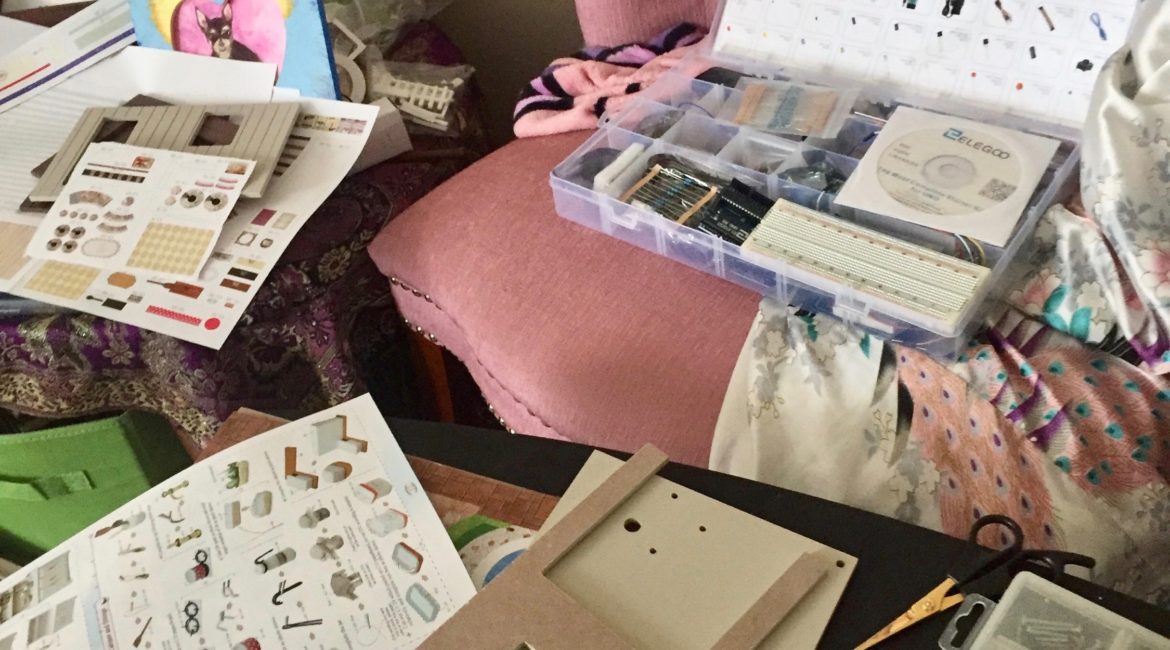When people lose their memory, sparks of what they can and cannot recall catalyze in the spaces they inhabit. Having the capability to answer the countless questions that people with memory loss have with this spatial motivation in mind meets with caregiver goals to provide emotional assistance, as many with memory loss need constant and repeated reassurance.
The project I am developing will support both individuals with memory loss and their caregivers. This support comes in the shape of a device that is a bright, colorful button that glows day and night. When pressed, the button tells a specific story about each one of the rooms that the person inhabits in the form of a brief recording. A loved one or the person with memory loss themselves will craft this narrative, and this familiar voice will ease the patient’s anxiety about their unfamiliar environment.
David M. Rieder’s theories about the tactile act of tinkering in his 2017 text Suasive Iterations: Rhetoric, Writing, and Physical Computing (New Media Theory) paves the way for humanities scholars to do interdisciplinary work that brings critical thinking skills, argumentation, research, and drafting to projects classically conceived of as STEM-based. Currently, I am building a model house that hooks up to the physical Arduino software, with a similar motivation in mind. It will model how the lights will operate in each room, as well as convey ideas about what the contents of each recording will emit.
Feature image by Rae Piwarski.


